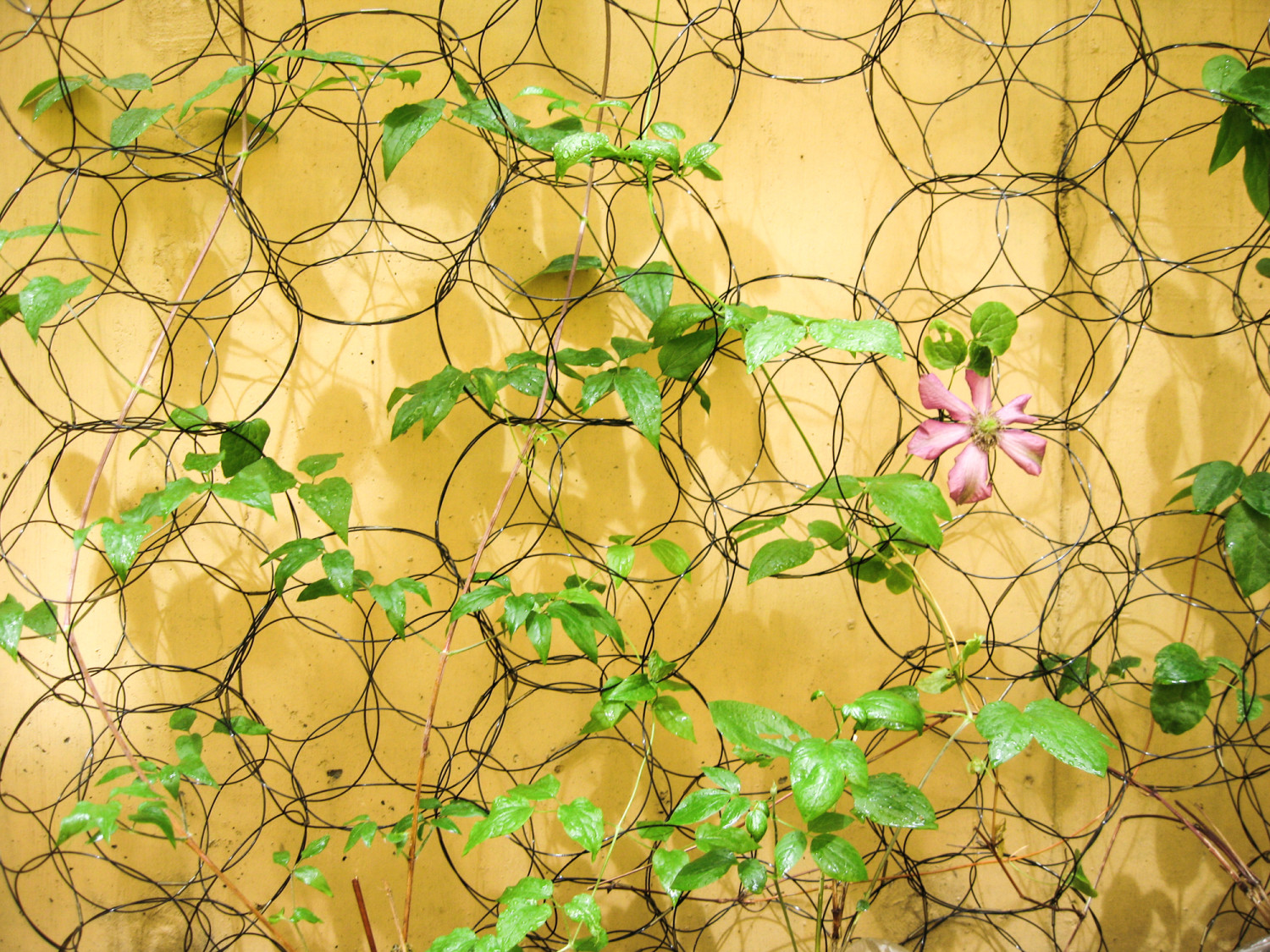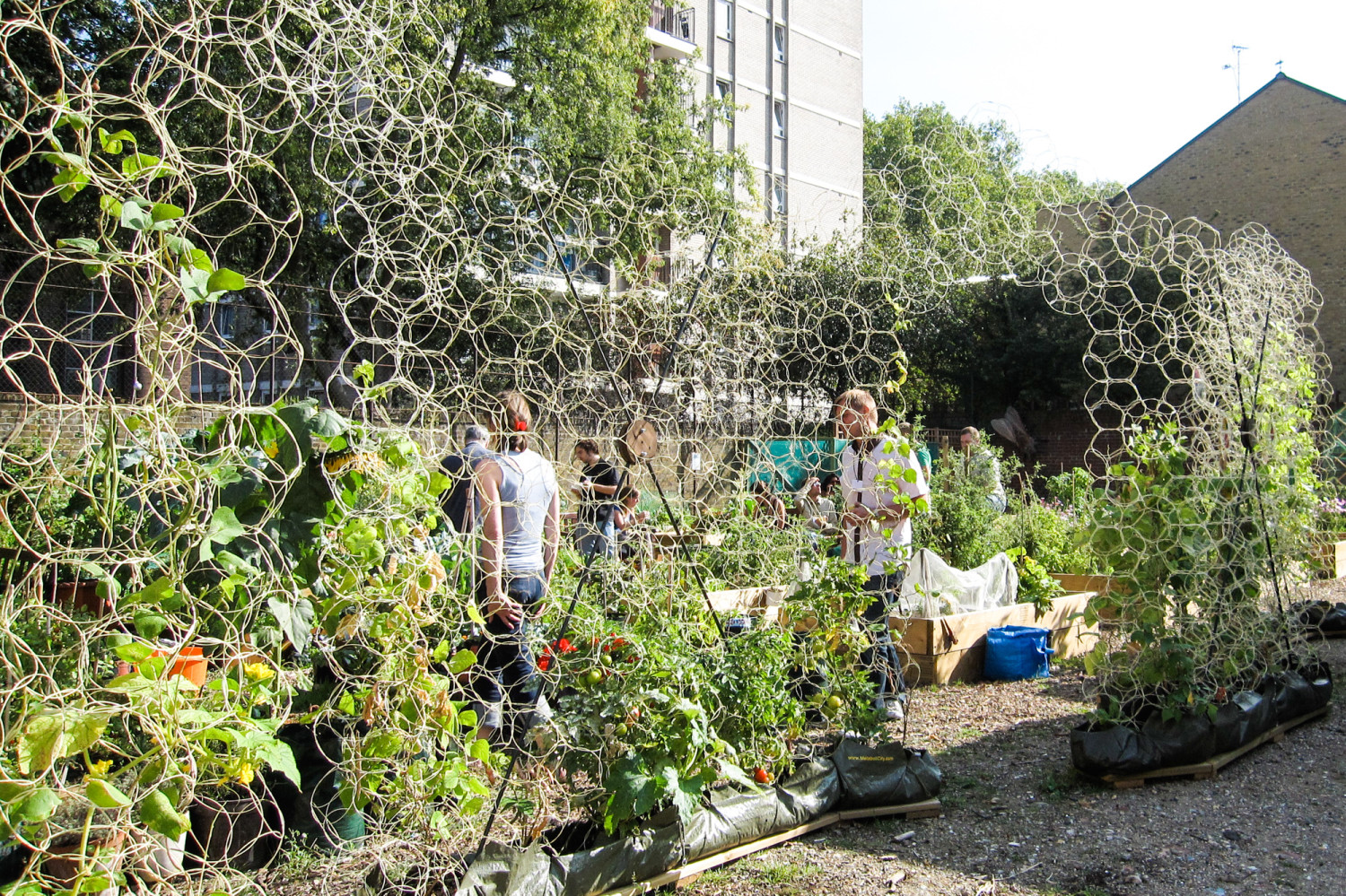Biowall is a hand woven three-dimensional structure that can be crafted into lace-like surfaces of any dimension and form.
Fiberglass rods are bowed into rings and woven together to form a strong and flexible tension-compression system. The structure is self-similar enabling it to work on any scale and can be seen in our natural environment in the formation of bubbles, living cells and water molecules.

Biowall is a hand woven structure that can be crafted into lace-like surfaces of any dimension and form and provides a scaffold for life.
With plants creeping and crawling around the structure, BioWall can become an indoor, living wall that divides space and cleans the air we breathe. It is increasingly difficult to read the signs of our natural environment in urban, built landscapes therefore we use plants in our work as we consider them to be the most sophisticated of sensors and displays.
Biowall is not intended for mass manufacture but based on the idea that individuals can craft their environment and begin to understand and use the geometries of life. The notion of craft is fundamental to us because with a crafted object comes an emotional durability and longevity.
Biowall was acquired by the Museum of Modern Art NY following the exhibition ‘Design & the Elastic Mind’ on the 24–May 12, 2008
Biowall at the MoMA
Biowall is a hand woven structure that can be crafted into lace-like surfaces of any dimension and form and provides a scaffold for life.